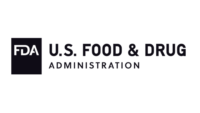FDA Finalizes Action Levels for Lead in Processed, Packaged Food for Babies and Young Children

Image credit: Freepik
The U.S. Food and Drug Administration (FDA) issued a new final guidance for industry on the action levels for lead in processed food intended for babies and young children, reflecting the levels of lead at which the agency may consider the food to be adulterated under the Federal Food, Drug, and Cosmetic Act (FFDC). FDA will consider action levels when deciding whether to bring enforcement action in a particular case, and although industry is recommended to abide by action levels, guidance documents do not establish legally enforceable responsibilities.
The final guidance covers packaged, processed foods that are marketed for babies and young children less than two years of age, including foods in jars, pouches, tubs, or boxes. These may include ready-to-eat (RTE) foods such as purees, as well as semi-prepared foods such as dry infant cereals. The action levels for processed foods described in the guidance are as follows:
- 10 parts per billion (ppb) for fruits, vegetables (excluding single-ingredient root vegetables), mixtures (including grain- and meat-based mixtures), yogurts, custards/puddings, and single-ingredient meats
- 20 ppb for single-ingredient root vegetables
- 20 ppb for dry infant cereals.
Action levels for lead in juices are addressed in a separate draft guidance, published in April 2022. The present draft guidance on packaged, processed foods does not cover infant formula, beverages, or snack foods like puffs and teething biscuits. FDA is currently collecting data on grain-based snacks to determine whether an action level would be appropriate for such products.
The guidance is part of FDA’s Closer to Zero initiative to reduce exposure to lead and other toxic heavy metals in food.
Looking for a reprint of this article?
From high-res PDFs to custom plaques, order your copy today!






